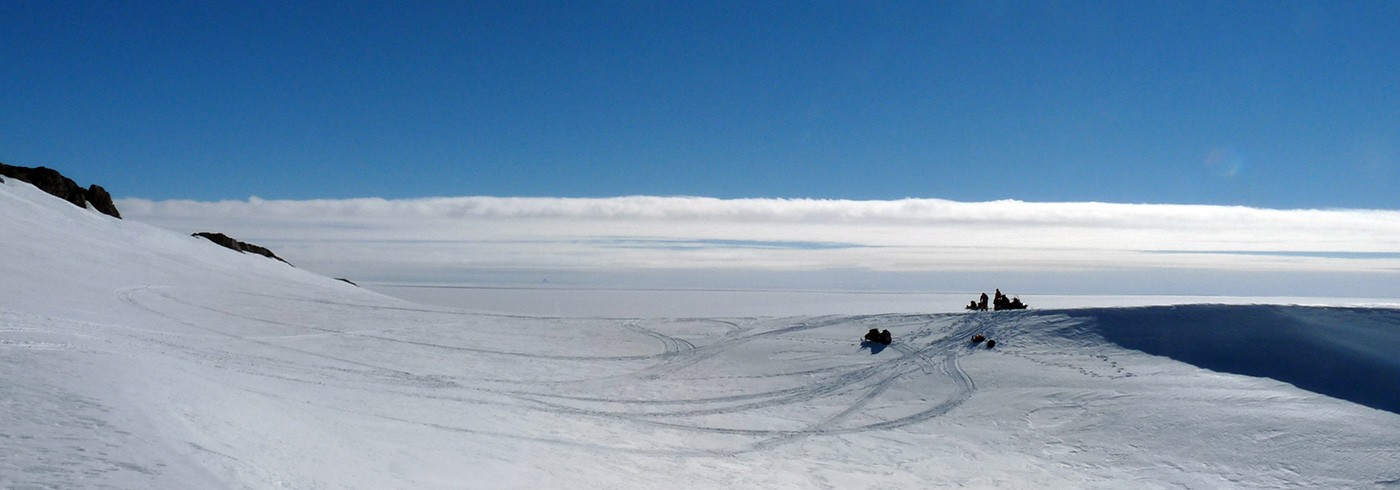On Thursday afternoon the helicopters arrived. Their original plan was to fly to Troll and pick up passengers, but clouds and low visibility changed the plan. Instead it was decided that we would deploy our first fuel supply. Jennifer followed along in the helicopter to ensure that the supply ended up in a location we can find, and also possible to reach by snowmobile. The flight would also mean that we were able to reconnaissance the mountains between SANAE IV and the fuel supply.
To the south the weather was very nice and the fuel supply was deployed without problems. But on the way back to SANAE IV, low clouds and winds came in. When we discovered the bad weather, we contacted the Swedish Polar Research Secretariat’s duty officer for additional support. Niklas, the duty officer this evening, could easily keep track of the helicopter’s position from Abisko in Sweden. The participants in the expedition are equipped with GPS devices that allows you to follow the others’ positions in real-time and send messages to each other. At the same moment I heard the helicopter fly over us, I received a message from Niklas that said ”they are back at SANAE now”.
Since the visibility was too low, the helicopter did not land. Instead it headed south to find a better landing spot. That turned out to be about 35 km south. When the helicopter landed and the engine was switched off, they could no longer keep in contact SANAE IV by radio. But we could stay in touch with Jennifer and the helicopter via Abisko and our satellite phones.
The situation was analysed together with the SANAE IV station management. There was no immediate danger for the four people and it was decided that our team was best prepared to help out the helicopter. We made preparations to go out with snowmobiles in order to deliver more fuel to the helicopter, but before we could leave SANAE IV we had to determine the helicopter’s exact location. Niklas in Abisko were able to help us out. Calle, our mountain guide, planned the route using satellite photos, and programmed the GPS’s with the route. About two hours after the helicopter landed, we were ready to launch our expedition consisting of four snowmobiles, five fuel barrels and emergency equipment.
We drove according to plan and at 02.00 we arrived at the helicopter’s location. Everyone was fine. After refueling, the helicopter could take off, and we returned home with Jennifer on one of the snowmobiles. The visibility was now much better, but as the weather often does in Antarctica, it quickly changed to worse. The helicopter managed to land at SANAE IV just before the visibility was down to zero.
The journey home on the snowmobiles were fast and we arrived at SANAE IV at 04.20.

